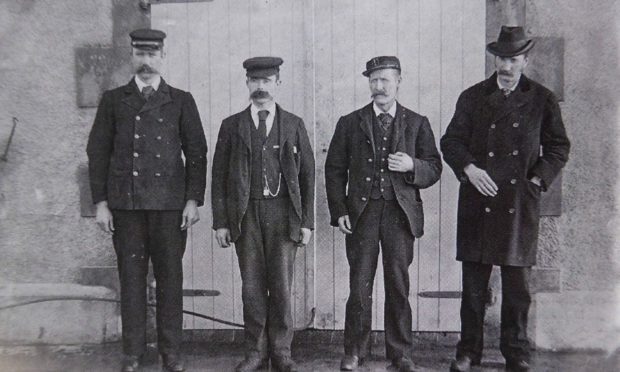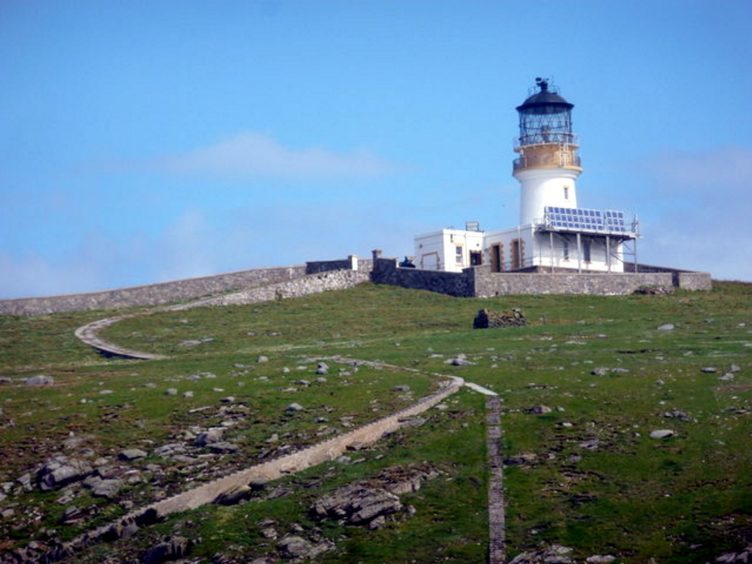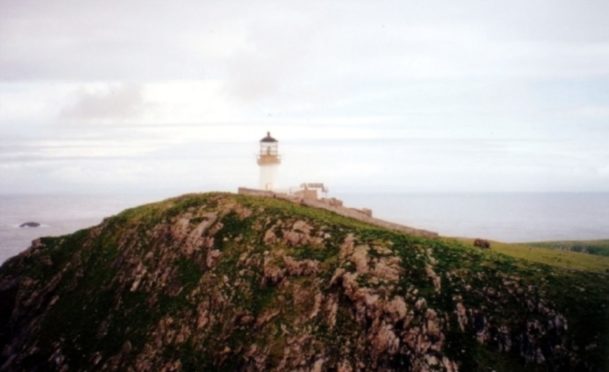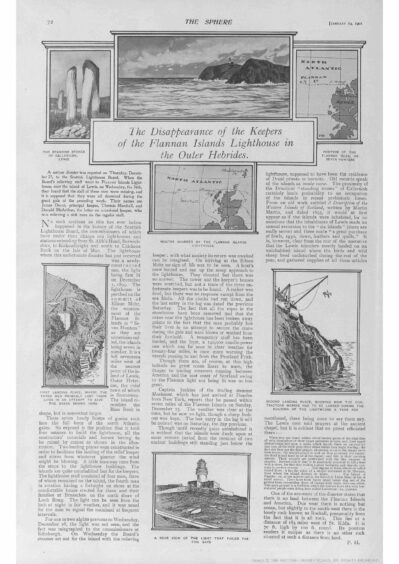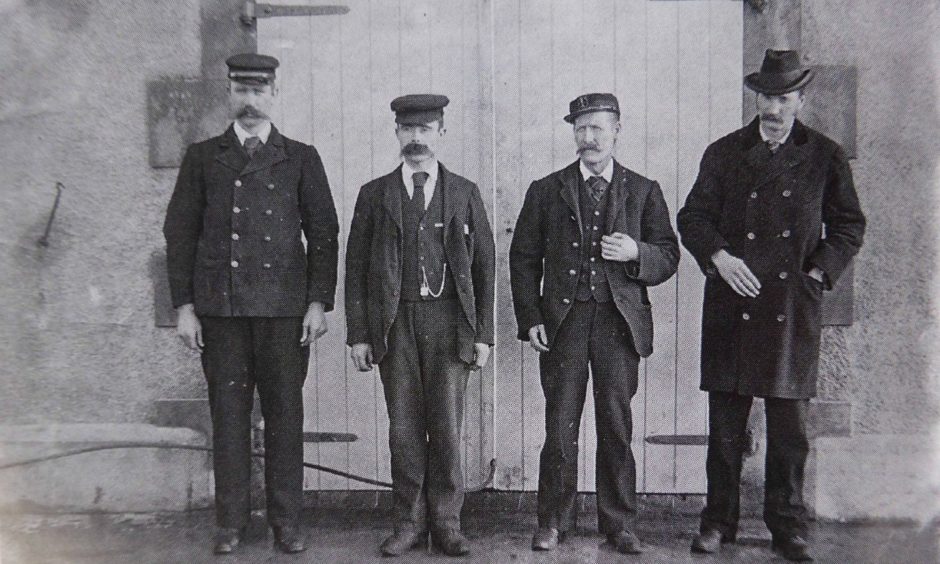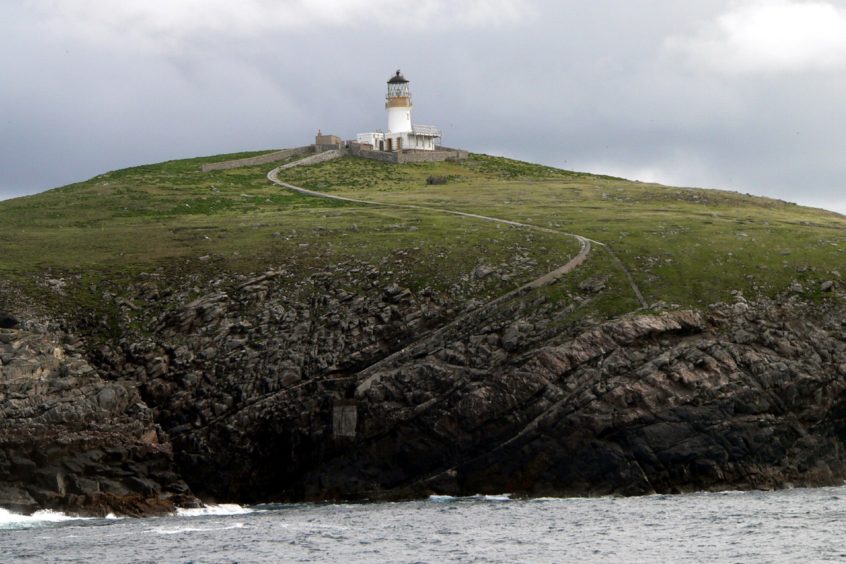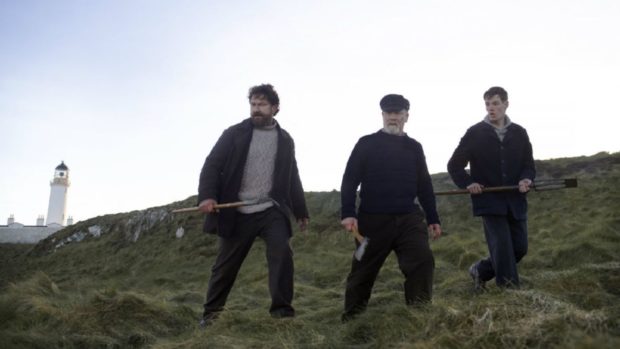It is the tale of the vanishing men that has captured the imaginations of conspiracy theorists for 120 years.
The white lighthouse on the remote Flannan Isles that keeps ships safe from the dangerous waters of the Outer Hebrides is home to one of the world’s greatest mysteries.
It was on Boxing Day 1900, that it was discovered that James Ducat, Thomas Marshall and Donald MacArthur had vanished.
Passing ships noted at the time that the lighthouse was lit on the night of December 14.
But they said it was out the following evening.
The Lighthouse Board’s supply tender Hesperus set sail the next day to investigate but because of wild winter storms the ship was unable to reach Flannan.
Day after day, the ship tried to approach the island without success and night after night the lamp at the top of the 75-foot-high tower remained ominously dark.
The raging storm did not subside until Christmas Day and it was Boxing Day before the sea was calm enough to allow the Hesperus to reach the island.
James Harvie, the captain of Hesperus, attempted to reach them by blowing the ship’s whistle and firing a flare, but was unsuccessful.
Relief keeper: ‘I only too well knew something serious had occurred’
A boat was launched and Joseph Moore, the relief keeper, was put ashore alone at the foot of the 200-foot-high cliffs.
He climbed the 160 steep steps and found no sign of his three fellow keepers.
As he reached the bottom of the lighthouse he found the door was closed, as were all the doors to the outhouses and living quarters.
Upstairs in the 75ft-high tower, a canary was starving on its perch and the lighthouse log and work notes for two days were on a slate.
Moore said: “I went up, and on coming to the entrance gate I found it closed.
“I made for the entrance door leading to the kitchen and store room, found it also closed and the door inside that, but the kitchen door itself was open.
“On entering the kitchen I looked at the fireplace and saw that the fire was not lighted for some days.
“I then entered the rooms in succession, found the beds empty just as they left them in the early morning.
“I did not take time to search further, for I only too well knew something serious had occurred.
“I darted out and made for the landing.”
Moore was ordered to return to the island along with buoy master Allan Macdonald and two seamen, Lamont and Campbell.
Captain Harvie set off immediately for Breasclete in Lewis and sent back a telegram to the mainland, which in turn was forwarded to the Northern Lighthouse Board Headquarters in Edinburgh.
The telegraph read:
“A dreadful accident has happened at Flannans.
“The three keepers, Ducat, Marshall and the occasional have disappeared from the island.
“On our arrival there this afternoon no sign of life was to be seen on the island.
“Fired a rocket but, as no response was made, managed to land Moore, who went up to the station but found no keepers there.
“The clocks were stopped and other signs indicated that the accident must have happened about a week ago.
“Poor fellows they must been blown over the cliffs or drowned trying to secure a crane or something like that.
“Night coming on, we could not wait to make something as to their fate.
“I have left Moore, MacDonald, buoymaster and two seamen on the island to keep the light burning until you make other arrangements.
“Will not return to Oban until I hear from you.
“I have repeated this wire to Muirhead in case you are not at home.
“I will remain at the telegraph office tonight until it closes, if you wish to wire me.”
The superintendent’s investigation
A few days later, Robert Muirhead, the board’s superintendent, who both recruited and knew all three men personally, departed for the island to investigate the disappearances.
His investigation of the lighthouse found nothing over and above what Moore had already reported.
“After a careful examination of the place, the railings, ropes etc and weighing all the evidence which I could secure, I am of opinion that the most likely explanation of the disappearance of the men is that they had all gone down on the afternoon of Saturday, 15 December to the proximity of the west landing, to secure the box with the mooring ropes, etc and that an unexpectedly large roller had come up on the island, and a large body of water going up higher than where they were and coming down upon them had swept them away with resistless force,” he said.
“I have considered and discussed the possibility of the men being blown away by the wind, but, as the wind was westerly, I am of the opinion, notwithstanding its great force, that the more probable explanation is that they have been washed away as, had the wind caught them, it would, from its direction, have blown then up the island and I feel certain that they would have managed to throw themselves down before they had reached the summit or brow of the island.
“I visited Flannan Islands when the relief was made so lately as 7th December, and have the melancholy recollection that I was the last person to shake hands with them and bid then adieu.”
In the days after the discovery of the abandoned lighthouse, the crew of the Hesperus made thorough searches of the island, hoping to find a clue.
At one of the harbours they discovered considerable damage, with part of an iron rail wrenched out of the concrete and a rock estimated to weigh a ton dislodged.
Turf on top of a 200ft cliff had been ripped away from the edge but there was no sign of any of the men.
The lighthouse log was kept up to date until December 15.
However, in the days running up to the men’s disappearance, some strange entries had been made. One said ‘James Ducat irritable’ while another said ‘Donald McArthur crying’.
The final entry read: ‘Storm ended, sea calm. God is over all’.
The Vanishing Men
The principal keeper was James Ducat, 43, who came from Arbroath and had spent two decades in the lighthouse service.
He was a married man and had four children.
Ducat had been selected to run the lighthouse while it was still under construction, and had spent a total of 14 months on Eilean Mor.
His companions were the second assistant keeper, Thomas Marshall, who was 28 and unmarried, and an occasional keeper named Donald McArthur, 40, a married man from Breascleat.
McArthur was an old soldier and was standing in for William Ross, the first assistant keeper, who was on extended sick leave.
Flannan Isles lighthouse mystery has inspired many
The unsolved mystery of the three men’s disappearance inspired artists and writers.
In 1912, the poet Wilfrid Wilson Gibson wrote a poem reimagining the story and the search for Ducat, Marshall and McArthur.
The mystery also was the inspiration for the composer Peter Maxwell Davies’s modern chamber opera The Lighthouse in 1979).
Peter Gabriel and Mike Rutherford from Genesis wrote and recorded The Mystery of Flannan Isle Lighthouse in 1968 while working on their first album, but it was not released until 1998 in Genesis Archive 1967–75.
Gerard Butler, Peter Mullan and Connor Swindells played the three men when the mystery was made into a movie in 2018.
Joe Bone, who made a name for himself as the star of the one-man Bruce Bane stage play series, wrote The Vanishing with fellow actor Celyn Jones, who he met on the set of BBC television drama, Castles in the Sky, in 2013.
Three lighthouses in Dumfries and Galloway – Killantringan, Mull of Galloway and Corsewall – along with Cloch in the Firth of Clyde, stood in for the Flannan Isles during filming.
The shoot also took in Port Logan, which has many similar features to the Isle of Lewis harbour from where the men would have sailed to the Flannan Isles.
The lighthouse, more than 215ft above sea level, was completed in 1899, a year before the tragedy after being designed by David Alan Stevenson for the Northern Lighthouse Board (NLB).
The lighthouse was automated in 1971.
The Flannan Isles lighthouse theories
Ducat, 43, MacArthur, 40, and Marshall, 28, were some of Eilean Mor’s first lighthouse keepers and, at the time of their disappearance, the sole inhabitants of the island.
Despite months of investigation, no trace was ever found of the three men who left two widows and six children behind.
A popular explanation was that one keeper had murdered the other two before throwing himself into the sea in remorse — MacArthur was known to hate this posting and was known to be violent — but that was never enough to satisfy the conspiracy theorists.
The seven Flannan Isles were known as “the Seven Hunters” in the Middle Ages, and some speculated the “Phantoms of the Seven Hunters” so resented the intrusion of the lighthouse they lured the men to their deaths.
Abduction by foreign spies was also suggested, while others blamed a boat filled with ghost pirates.
The disappearance was even the subject of an episode of Doctor Who with Tom Baker in 1977 which blamed a shape-changing alien.
